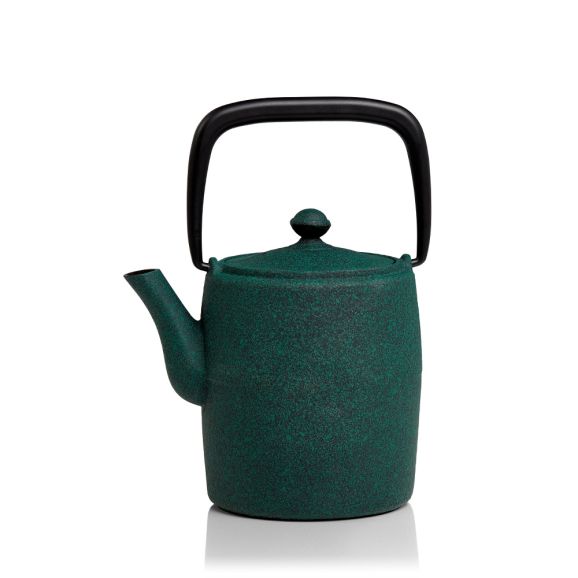Description
The Wabi teapot
This cast-iron teapot is the result of the centuries-old expertise of the Wazuqu foundry.
Its simple, elegant shape and delicate green colour are based on the aesthetic and philosophy of wabi-sabi, which has its origins in the tea ceremony. Wabi refers to beauty in its most modest form, sometimes marked by imperfection, while sabi is the attraction to objects that have become more beautiful over time.
The Wabi teapot has a spout for delicate, precise pouring. Easy to use, Wazuqu teapots are on average 25% lighter than typical Japanese cast-iron teapots, thanks to the foundry’s perfection of Japanese craftsmanship over more than 400 years.
The WAZUQU foundry
WAZUQU is a traditional Japanese foundry that has been operating since 1604, based in northern Japan (Yamagata).
The name of the foundry, "Wa-zuqu", refers to a type of Japanese cast iron. This type of cast iron was used in Japan until the Edo period, to make swords and scissors. Today, there are just a few workshops in the world that still make teapots using this extremely pure Wa-zuqu cast iron.
Teapots made by the WAZUQU foundry are very comfortable to handle, being on average 25% lighter than typical Japanese cast-iron teapots, thanks to the artisanal expertise perfected over more than 400 years.
The cast iron used by this foundry is composed of 70% recycled materials. However, the quality of its products is just as high as that of products made from new raw materials.
Advices
Before using your teapot for the first time, follow the steps below:
1 – Fill the teapot with boiling water.
2 – Wait for a minute, and then empty out the water.
3 – While the teapot is still warm, wipe the outside with a dry cloth.
4 – Repeat this process 3 or 4 times.
5 – Leave the teapot to dry naturally, inside and out, for about 30 minutes.
To preserve the quality and beauty of your teapot, follow the steps below:
1 – After using the teapot, rinse it out with hot water, avoiding the use of detergents.
2 – Dry the outside of the teapot while it is still warm.
3 – Never use an abrasive sponge to clean your teapot; instead, wipe it with a soft cloth.
4 – Always leave the inside of the pot to dry with the lid off.
5 – To avoid stains and rings, never leave water or tea in your teapot for too long.
6 – Before putting your teapot away, be sure that it is completely dry, inside and out and if possible, store the lid separately.
Cast iron is an iron-based alloy which is a black metal before treatment. It can be colored, in various stages, with a number of color pigments. After time, these pigments may fade slightly, giving the teapot a lovely patina. However, to limit this natural fading, avoid letting the teapot come into contact with any of the following: detergents, grease, salt, humidity, direct heat, abrasive objects...
Traditionally, the Japanese let their teapots rust. This causes no harm to their health whatsoever; on the contrary it provides an additional source of iron. However, most models imported by Western countries have been varnished to prevent this oxidization process. The inside of your teapot is therefore protected with a harmless varnish, sealing the porous metal and preventing it from becoming tainted. With time, tannins may build up inside the teapot, forming a thin black layer. This will have no effect on the taste of your tea. The deposit will fade naturally if the teapot is left for several days, without its lid on, in a well-aired place room.
If you follow this advice, your teapot will remain in excellent condition and will last a lifetime.
